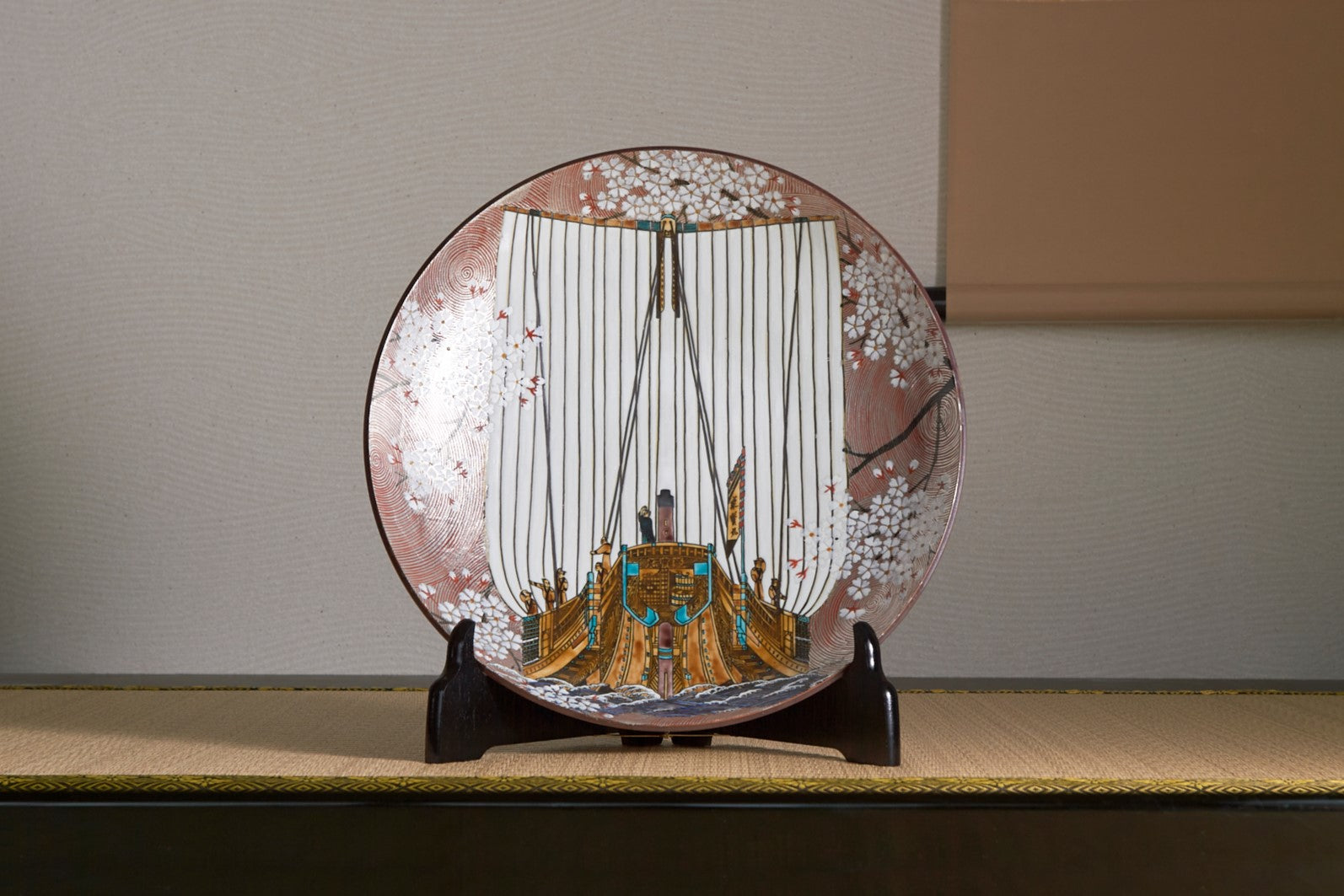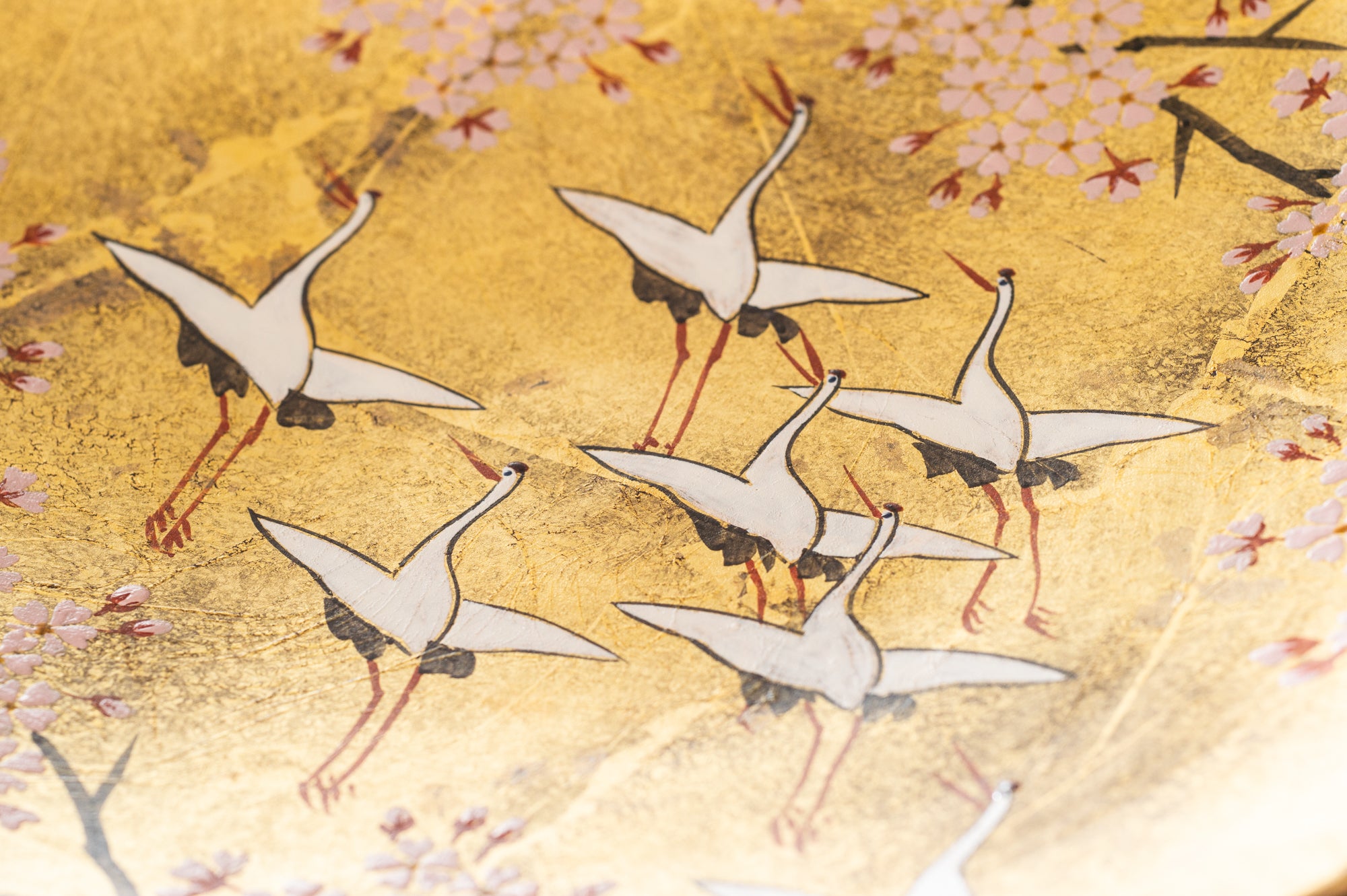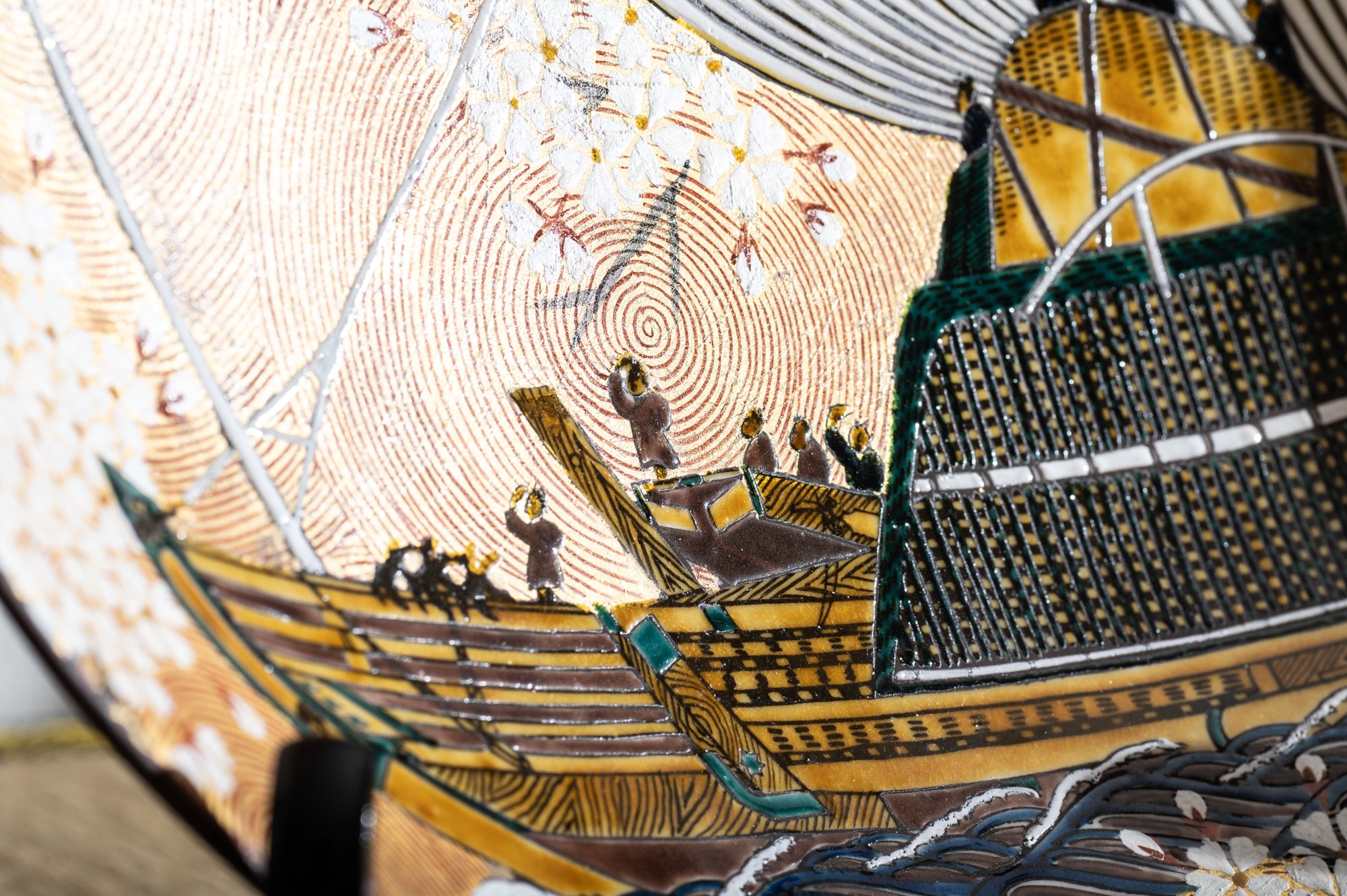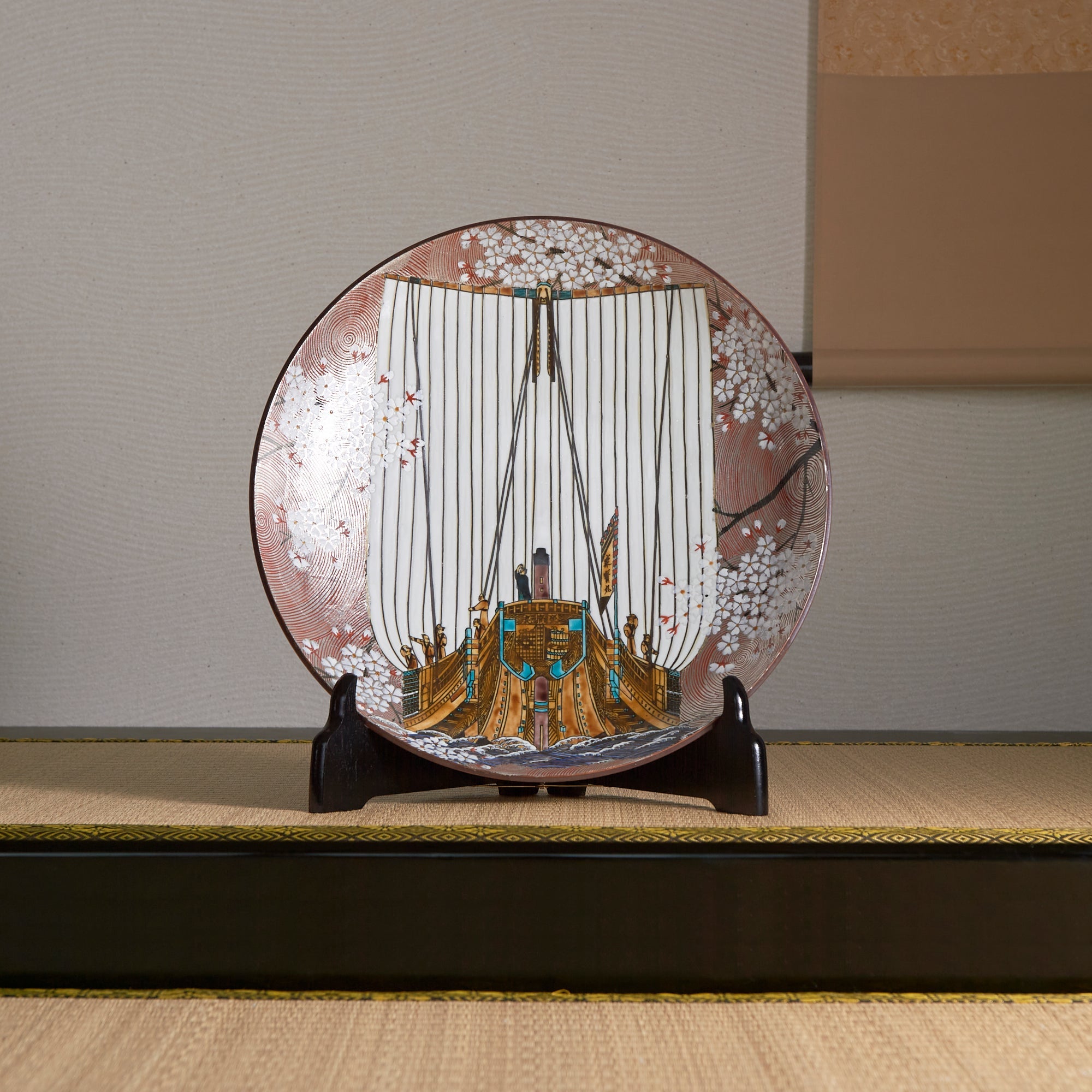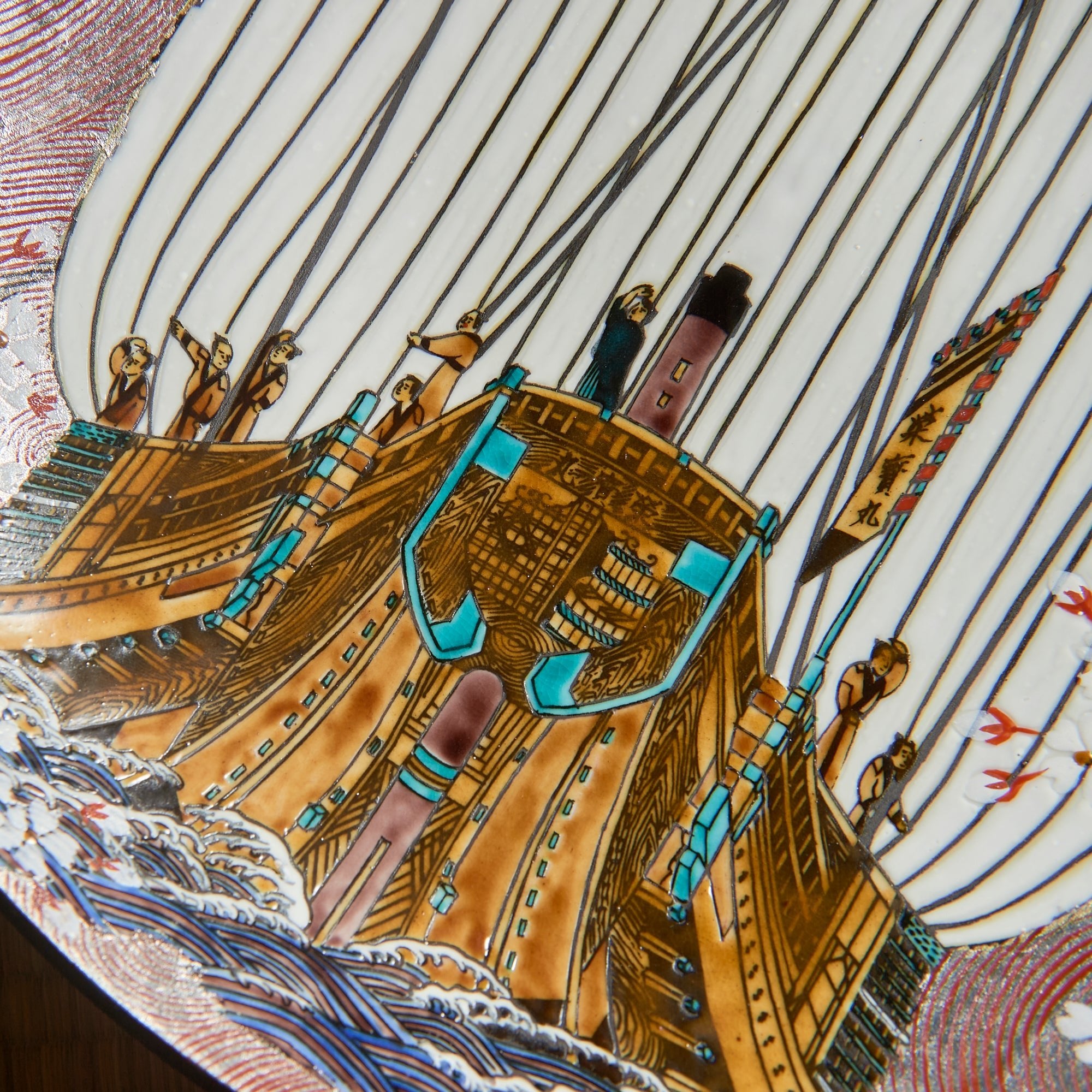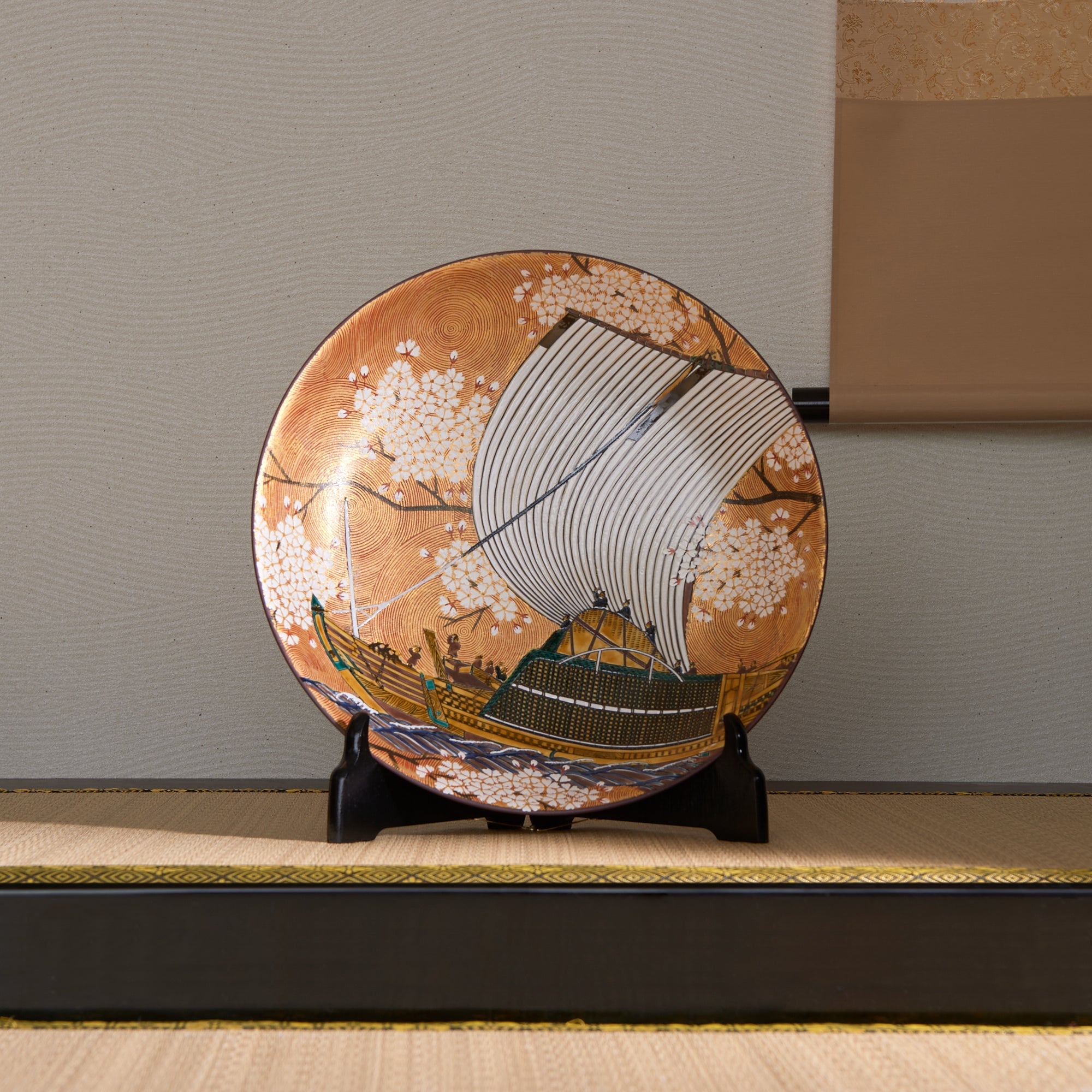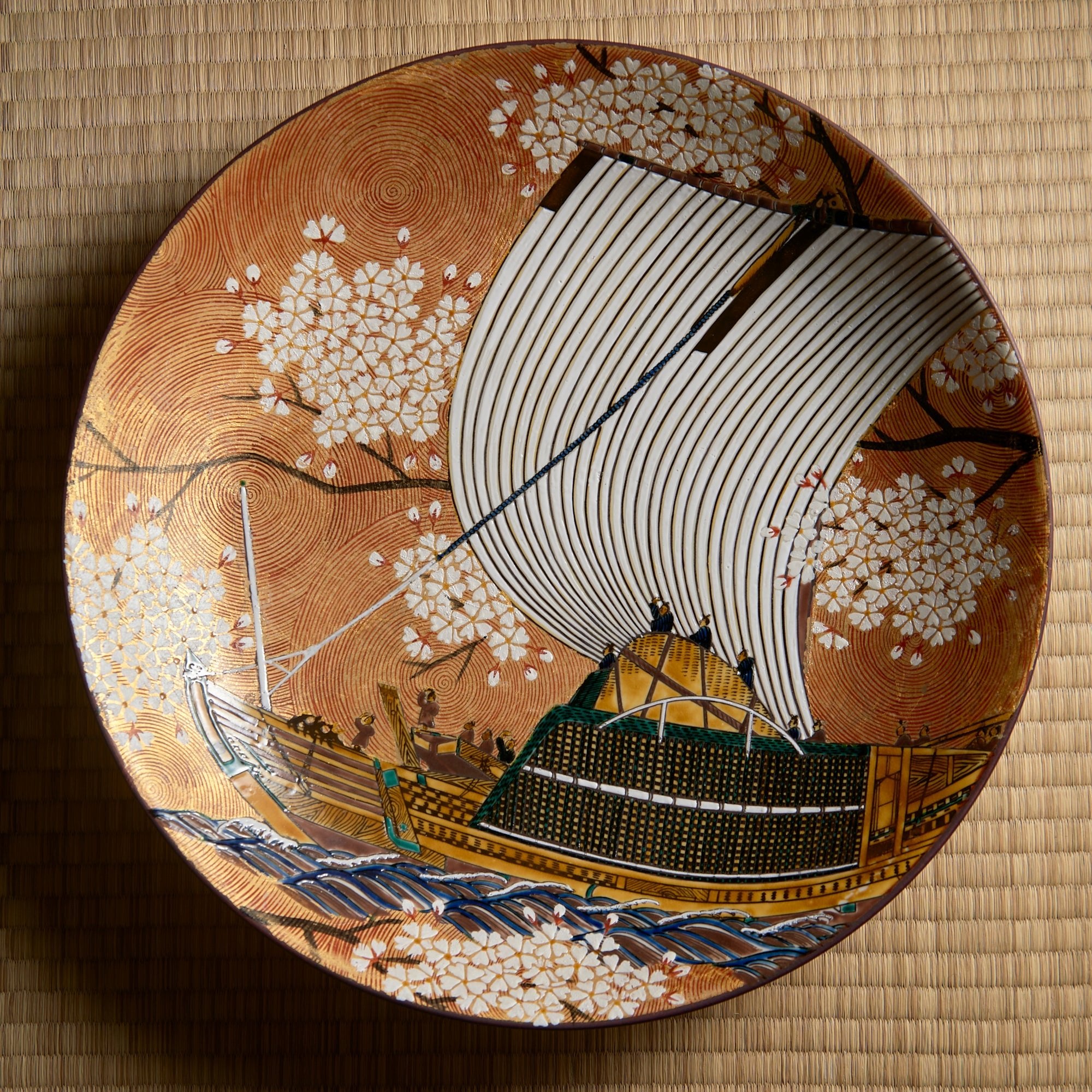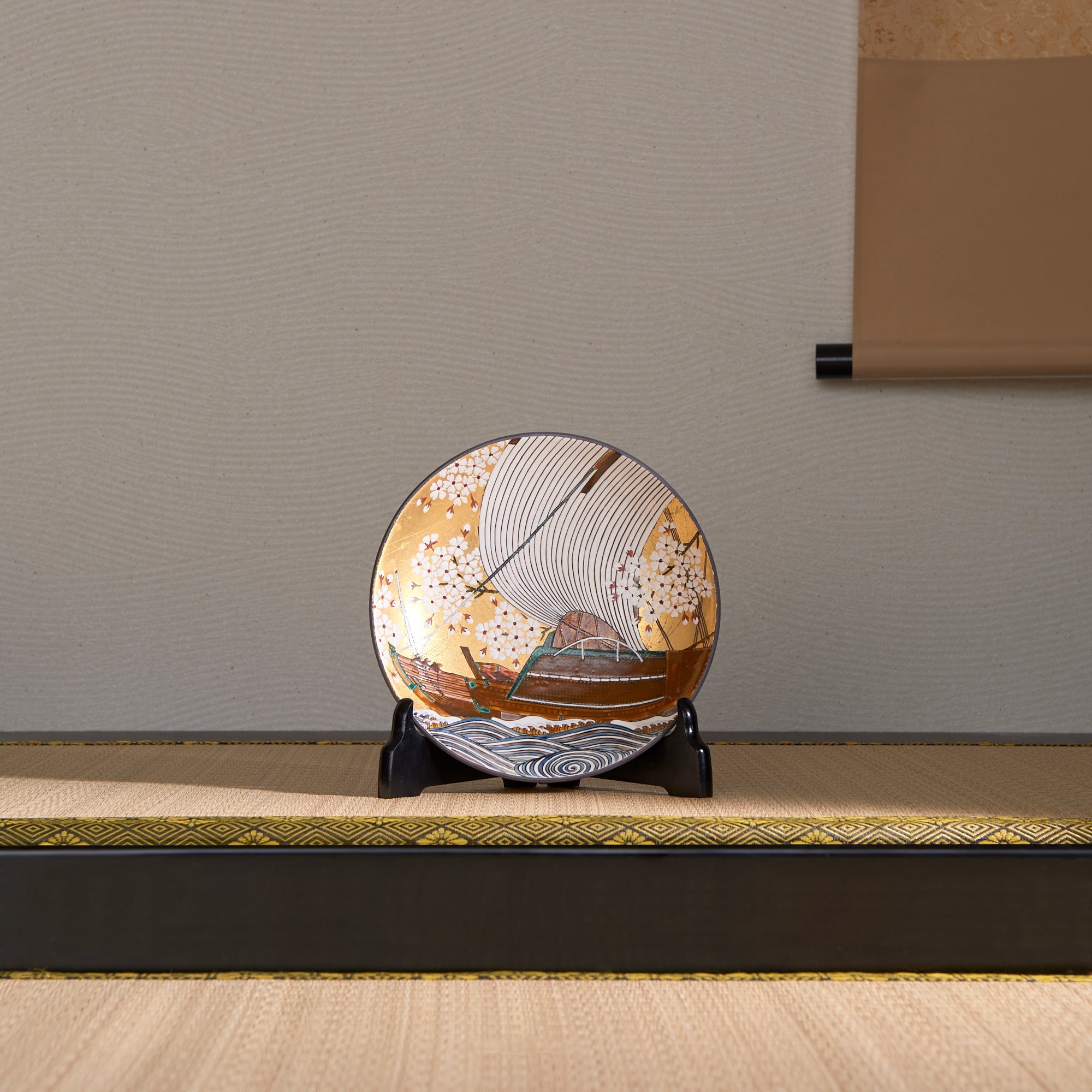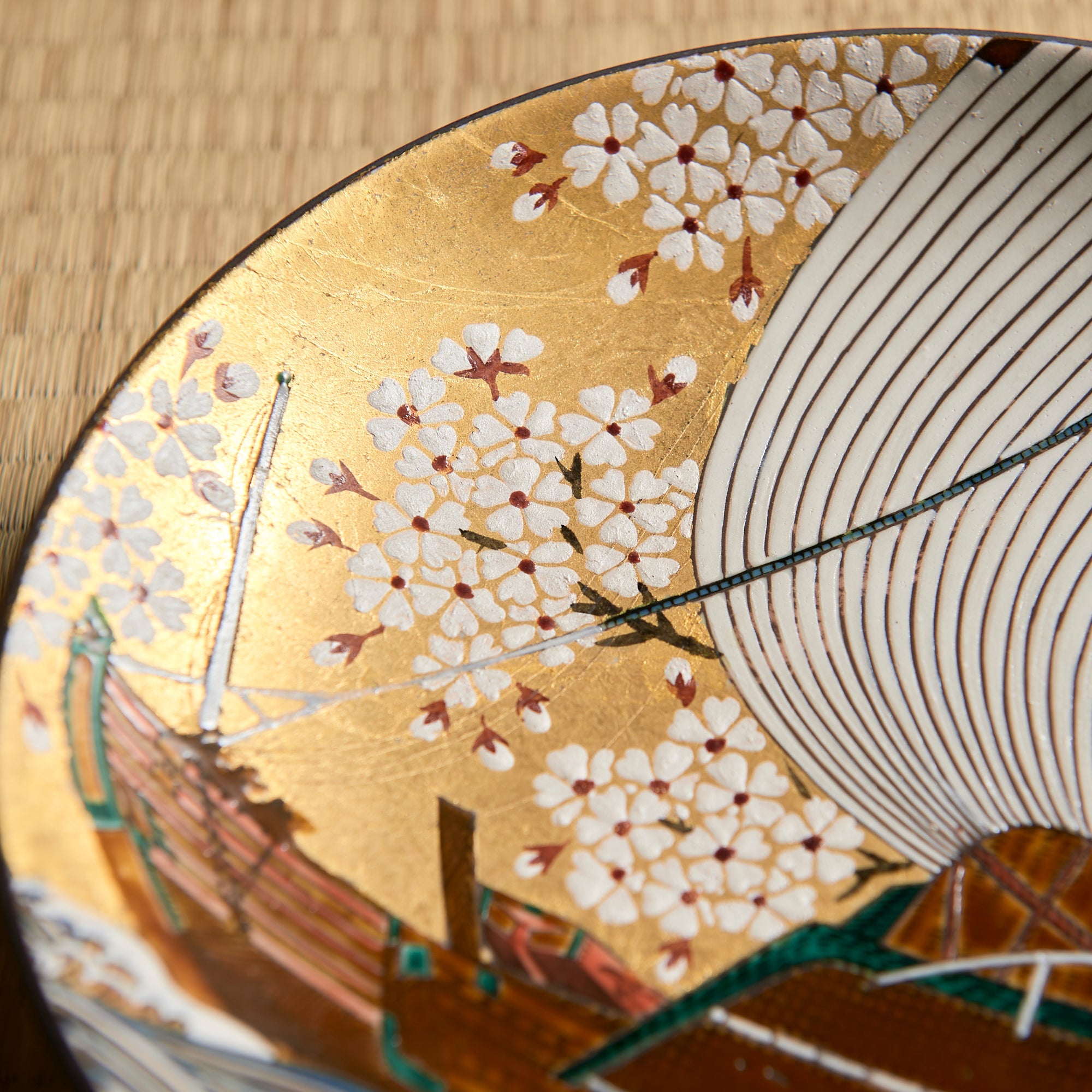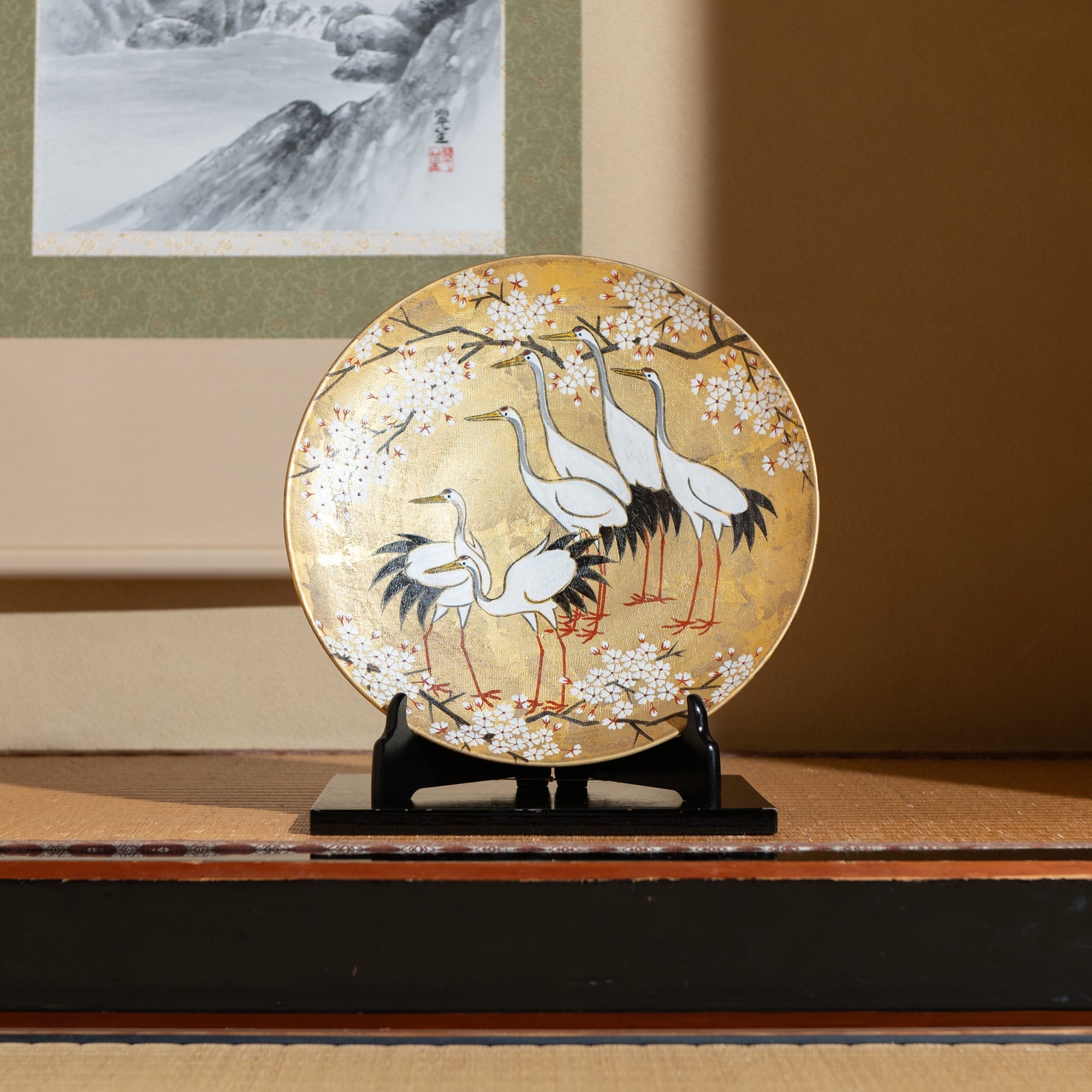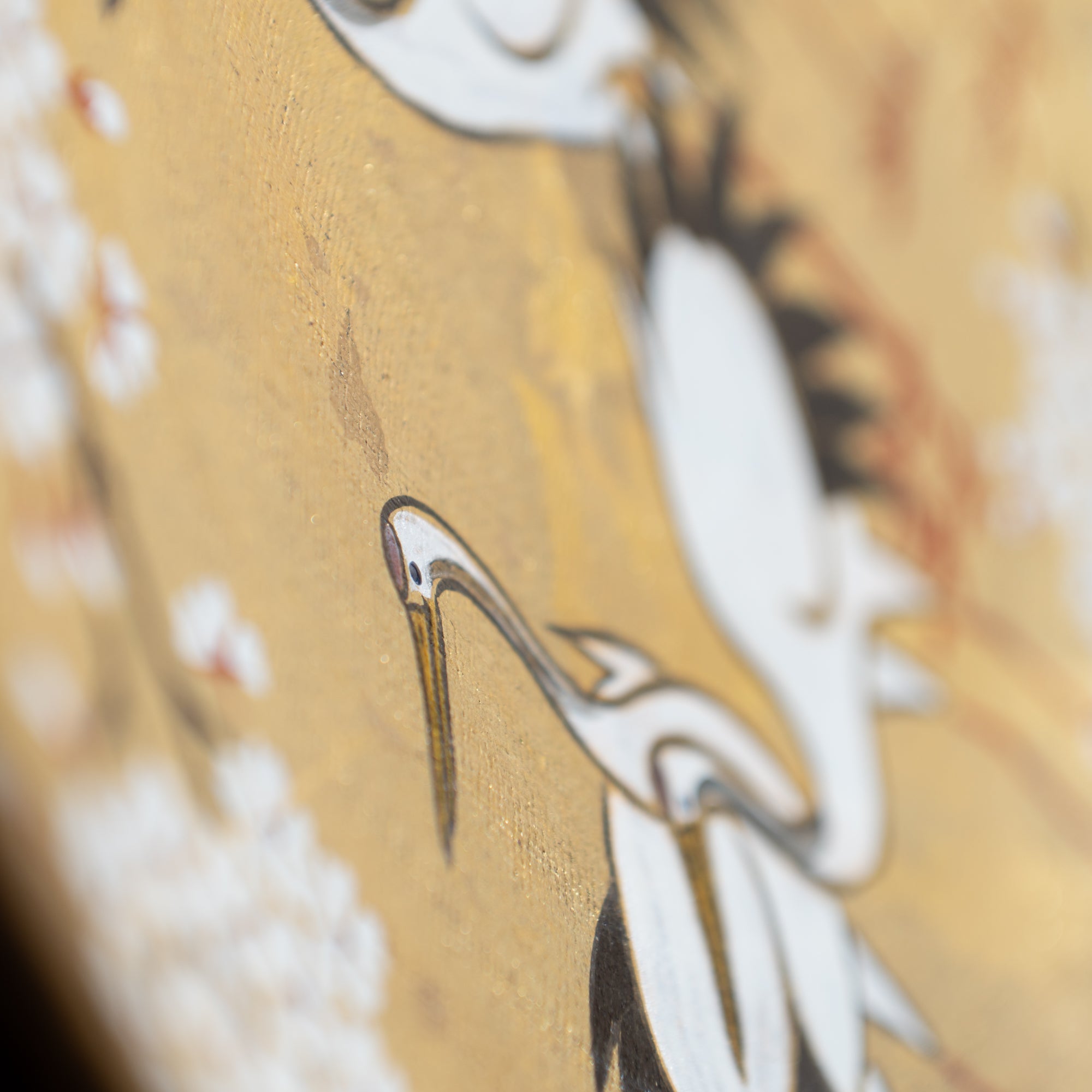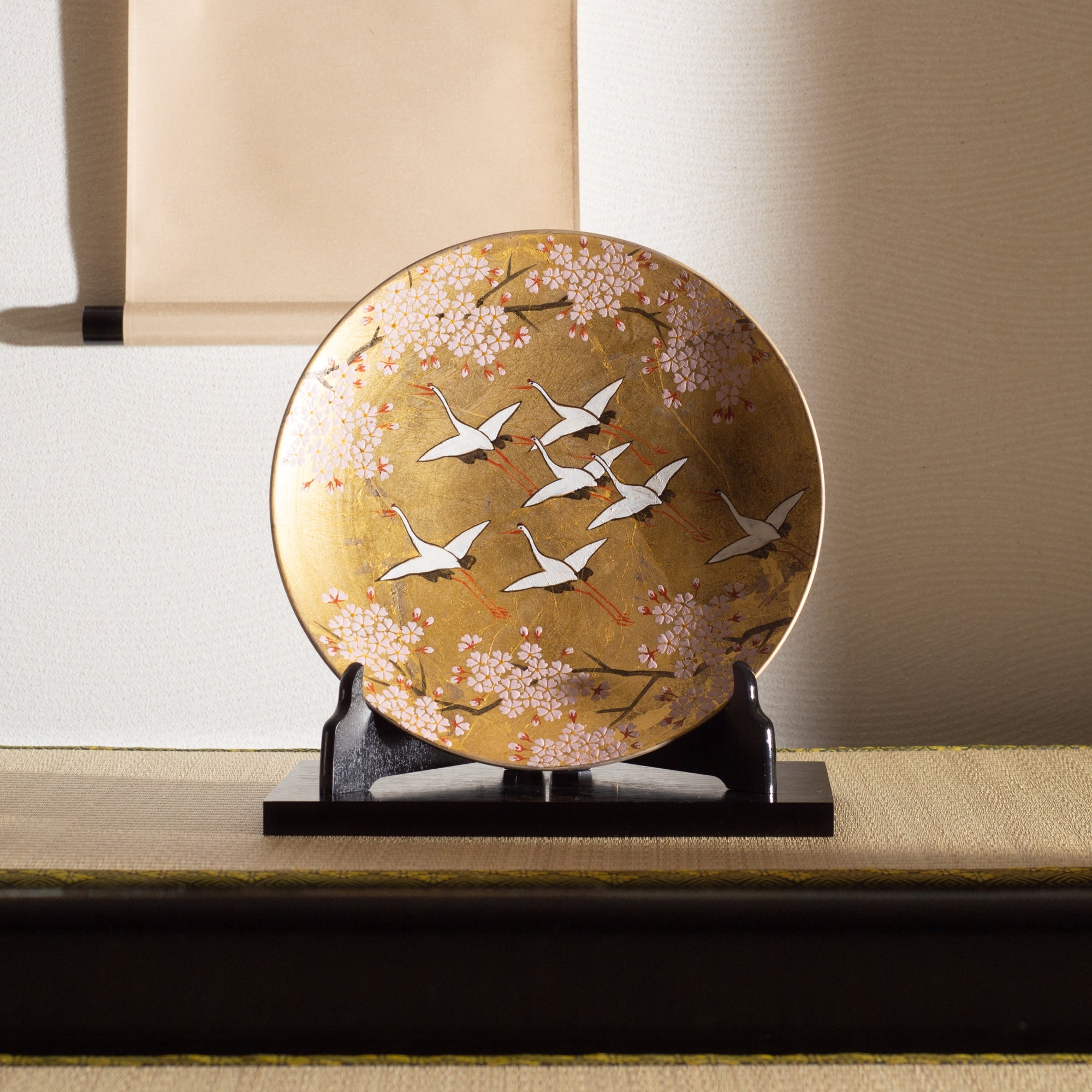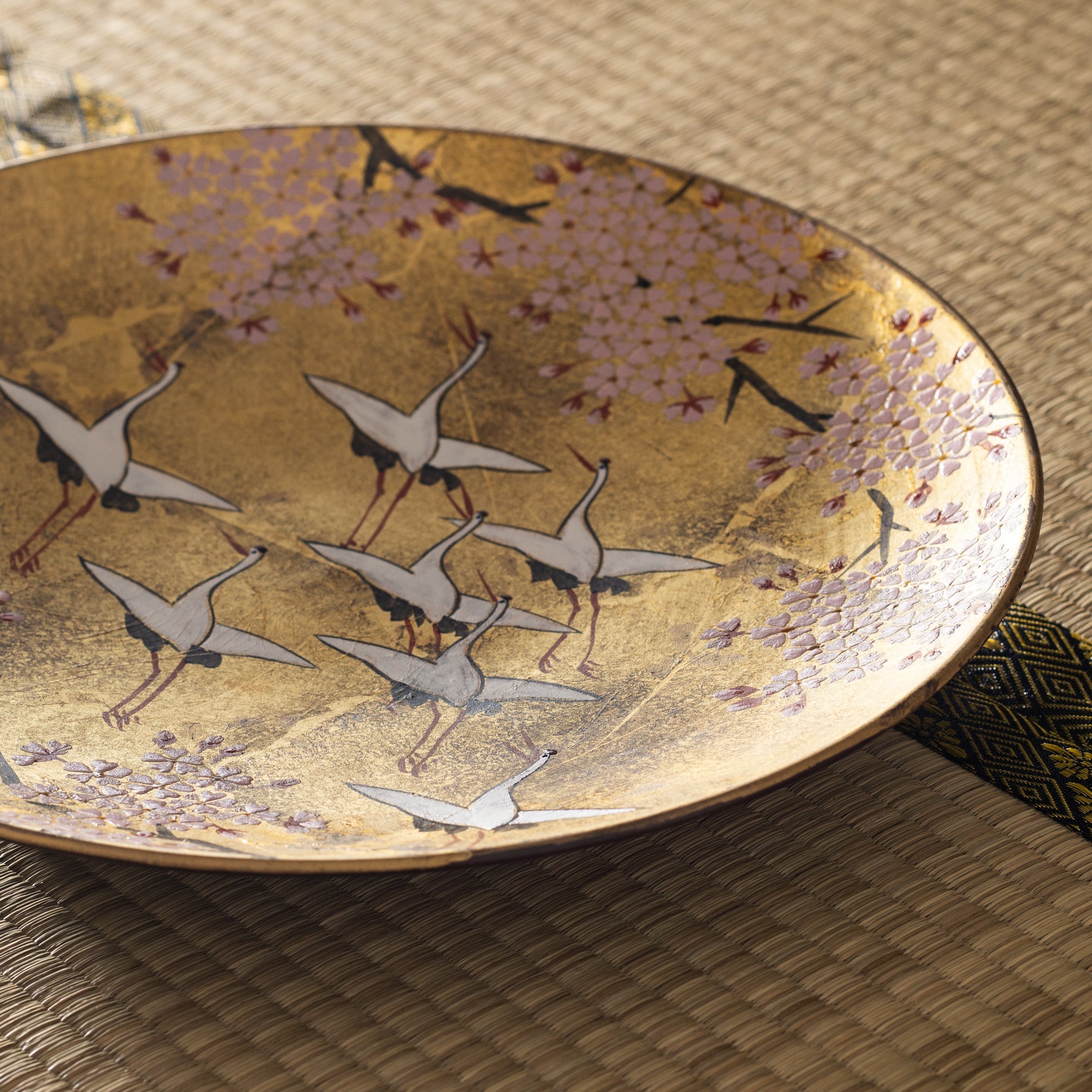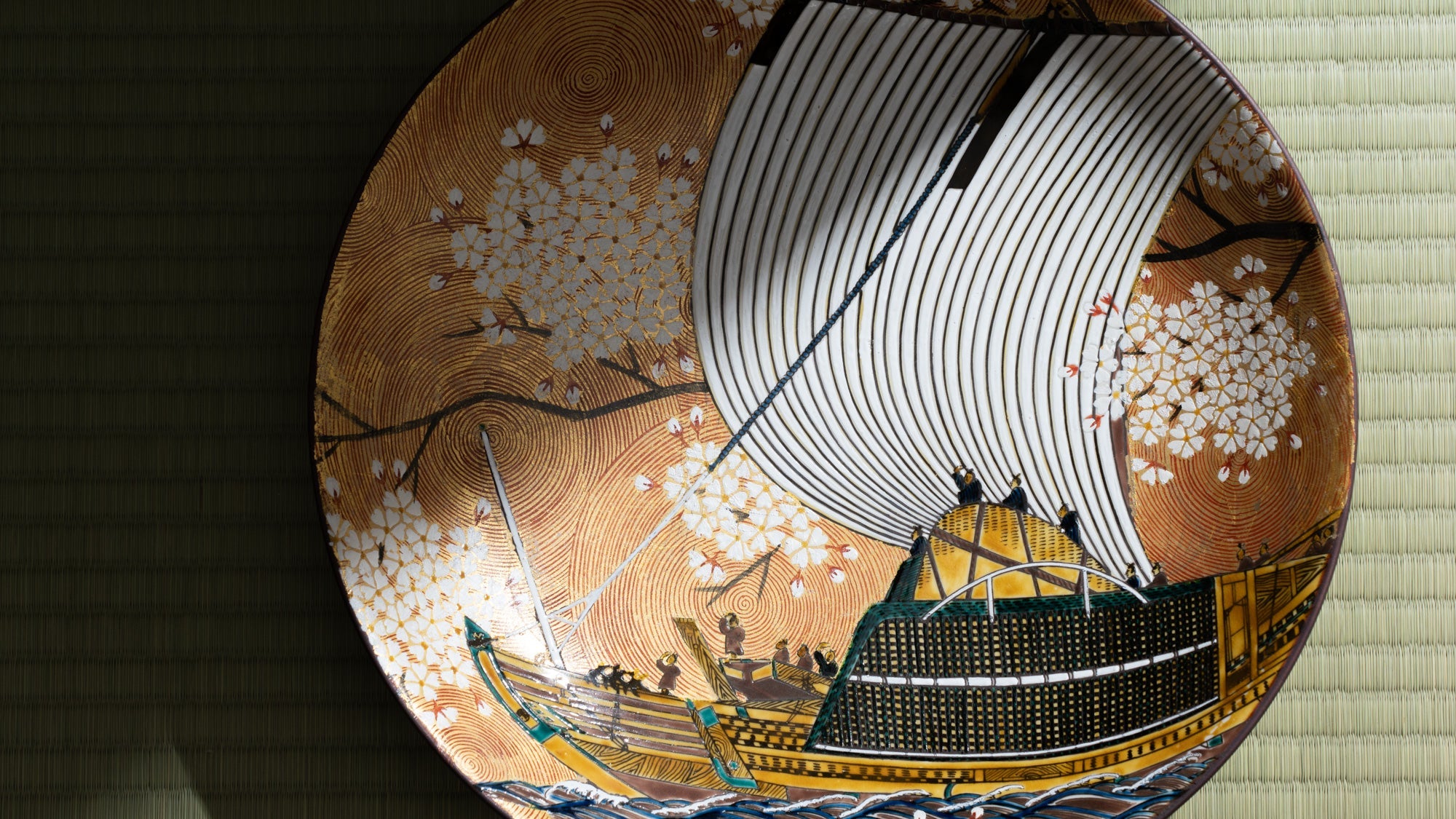
Romanticism of a Maritime Odyssey
Kitamura Takashi
Kitamura Takashi's art captures Japan's seafaring spirit, celebrating the bravery of the kitamaebune merchant ships. By portraying their departure rather than their return, he evokes deep emotions and symbolizes the courage required for uncertain journeys. His work reflects the solemnity and romanticism of these maritime voyages, creating a noble narrative of people setting out to explore the future.
Life's Noble Journey
Kitamura Takashi is a distinguished figure in Kutani ware, celebrated for his work that resonates deeply with Japan's historical and cultural narratives.
The kitamaebune, or northern-bound ships, sailed perilous seas off Hokuriku, forming the core of his artistic identity. These ships, carrying goods like kelp and seafood, symbolize the courageous spirit of sailors, many of whom faced uncertainty that they would ever return home.
He portrays the kitamaebune from the back, symbolizing the noble journey of life and capturing the fleeting beauty of departure. This bold composition and his detailed depictions of sailors, masts, and ships demonstrate his deep understanding of Japan's maritime affinity.
Adorned with gold leaf and inspired by the wave patterns of the Rimpa school of Japanese art in the Edo Period (1603–1868 CE), his pieces exude elegance and majesty. Holding a piece of Kitamura's work means holding a narrative of courage, adventure, and new journeys.
Dedication to Heritage and Elegance
Another remarkable piece by Kitamura showcases a flock of cranes taking flight beneath blooming cherry blossoms.
This scene, rendered with the vibrant colors and masterful brushwork synonymous with Kutani ware, exemplifies his talent. The rich color palette is a cornerstone of Kutani's allure. Inspired by his private collection of ko-Kutani ware, Kitamura meticulously researches and mixes colors to achieve the distinctive Kutani go-sai, "five colors."
Similar to his depictions of ships, the cranes embody the essence of Japanese art. Drawing inspiration from Rimpa school artists Ogata Korin and Tawaraya Sotatsu, whose work he encountered in museums, Kitamura utilizes Kanazawa gold leaf to create a soft background that accentuates the cranes' elegance amidst the full-bloom cherry blossoms.
A captivating artist, Kitamura continues to create unique works that fully harness the expressive potential of Kutani ware.
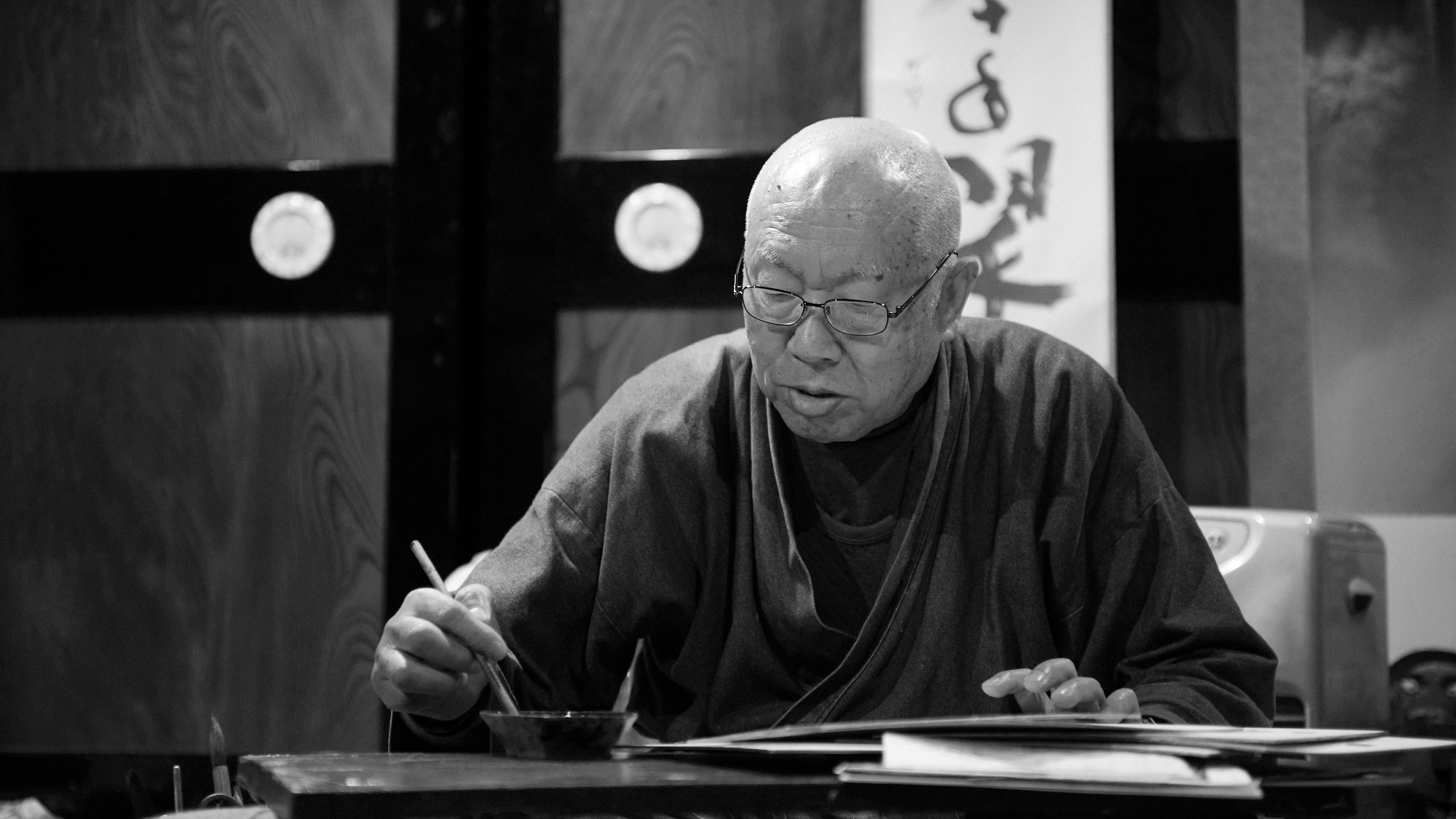
Biography
Kitamura Takashi, born in 1946 in Ishikawa Prefecture, is a renowned Kutani ware artist, celebrated for his work inspired by Japan's maritime history, especially the kitamaebune ships. Notably, he collaborated with Michael Jackson during his tour in Japan. Kitamura has been honored with numerous awards, both in Japan and internationally, including the Japan Traditional Craft Exhibition Prize, and recognition at the Faenza International Ceramics Competition.
His international achievements extend to exhibitions in Singapore and France, and contributions to cultural exchanges, such as the 30th Anniversary of the Sister City Relations between New York and Tokyo. Kitamura's art, primarily focusing on ships from the Edo period (1603 CE–1868 CE), captures themes of bravery, perseverance, and the poignant beauty of departure. His work stands as a testament to the rich tapestry of Japanese heritage.


